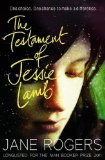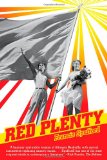Almost of necessity, dystopian literature has its roots in concerns of the times in which it is written. It is an author envisioning a potential future in which something already existing or on the horizon heads in a bad direction. What author Jane Rogers recognizes in her award-winning The Testament of Jessie Lamb is the synergistic effect of the primary cause or event.
 The book is built on a commonly imagined catastrophe – a virus. This isn’t a virus that spreads an Ebola-like plague or kills those who are infected. It is far more shattering for the future of mankind. Although this virus, an act of unknown bioterrorists, has infected everyone on the planet, it is activated only by pregnancy. Pregnancy triggers Creutzfeldt-Jakob disease, a variant of which is commonly called “mad cow disease.” Before the child comes to term, the disease destroys the mother’s brain and she will not survive, giving the condition the name Maternal Death Syndrome.
The book is built on a commonly imagined catastrophe – a virus. This isn’t a virus that spreads an Ebola-like plague or kills those who are infected. It is far more shattering for the future of mankind. Although this virus, an act of unknown bioterrorists, has infected everyone on the planet, it is activated only by pregnancy. Pregnancy triggers Creutzfeldt-Jakob disease, a variant of which is commonly called “mad cow disease.” Before the child comes to term, the disease destroys the mother’s brain and she will not survive, giving the condition the name Maternal Death Syndrome.
Not only does the virus kill every woman who becomes pregnant, the mother passes it along to the child. Because of that, women face the choice of childlessness or having one child and certain death. The effect on the human psyche and the future viability of the human race is devastating. This is the near-future England in which Jessie Lamb, a teenage girl, and her friends are coming of age. Yet Rogers ups the ante with a twist.
Science has not found a cure, only a vaccine, which does little good when everyone alive is already infected. Yet scientists – who include Jessie’s father – realize that vaccinating embryos frozen before MDS appeared will be immune from the virus, providing a way to better perpetuate the human race. One concept is “Sleeping Beauties,” young women who are implanted with vaccinated embryos and, after becoming pregnant, are placed in a coma and on life support until the fetus is brought to term. Upon birth, the mother’s life support is unplugged and the child goes to adoptive parents.
Not surprisingly, this creates a national uproar. So scientists also experiment on creating artificial wombs, as well as transgenic wombs in sheep or potentially other animals that can bring a human fetus to term. These proposed “solutions” result in religious and political battle lines being drawn among a wide variety of interest groups. There are activist groups who contend there would be more focus on a cure if were men were dying instead of women. There are animal rights groups confronting scientists and those who believe animal experimentation is preferable to human experimentation or the Sleeping Beauties program. There are the legal and social issues of who has rights in a frozen embryo and who are the parents.
Jessie is just one of many teens and children buffeted by these events. Some, both young and old, have given up hope entirely, leading to societal decay. There is growing divisiveness between young and old, with the young blaming their parents or others for the condition of the world and abandoning family life to strike out on their own. Others become members of any number of militant factions. Others do battle over religious doctrine, both traditional and evolving.
The testament Jessie writes reveals her varying and uncertain views of and attitudes toward these events. In addition to the traditional issues in any family – domestic discord, the illness of close relatives and the like – she must confront both feelings of hopelessness and a desire to help solve the problems in some fashion. She considers activism, both aggressive and passive. She struggles with being a prime candidate to be a Sleeping Beauty. She finds herself caught among the various and often opposing opinions and priorities of her friends and peers.
Yet the central conflict is a universal one. Jessie is often impassioned by altruism and the need to make a difference. “The only solution is a new beginning,” she says at one point. “And the only relief is in doing something to make that happen.” Her parents tend toward the pragmatism that comes with age. Her desire to help effectuate change clashes sharply with their willingness to allow science to work toward a cure.
The mix of issues, conflicts and ramifications of MDS helped earn The Testament of Jessie Lamb the Arthur C Clarke Award in May. The book also was long-listed for the 2011 Man Booker Prize. At the same time, the mix also seems to introduce a couple characters who seem to appear and reappear just for the purpose of raising an issue or conflict. And at times Jessie seems a bit too mercurial, although that may well be an effort to reflect the struggle of a teenage mind to cope with the threat and ramifications of MDS.
Jessie Lamb isn’t in the vanguard of some movement. And whether she is a heroic role model may depend on the reader’s own predilections. Yet Rogers allows the reader to reach their conclusion but unfolding the struggles of a young woman in finding her place and her own way in a confusing world beset by turmoil.
Since everything was going to rack and ruin and nothing could be done to make any of it right, the most ecologically useful thing anyone could do would be to die.
Jane Rogers, The Testament of Jessie Lamb









